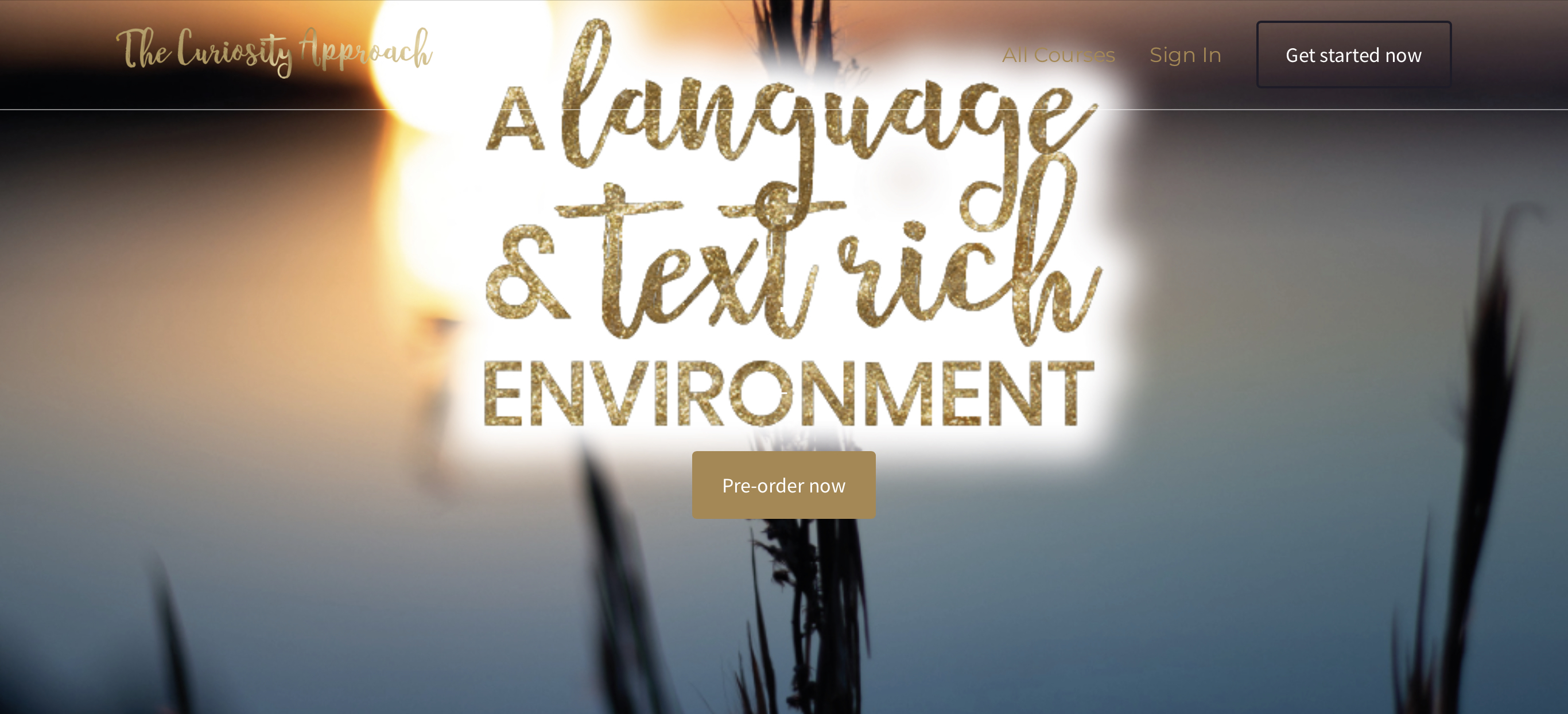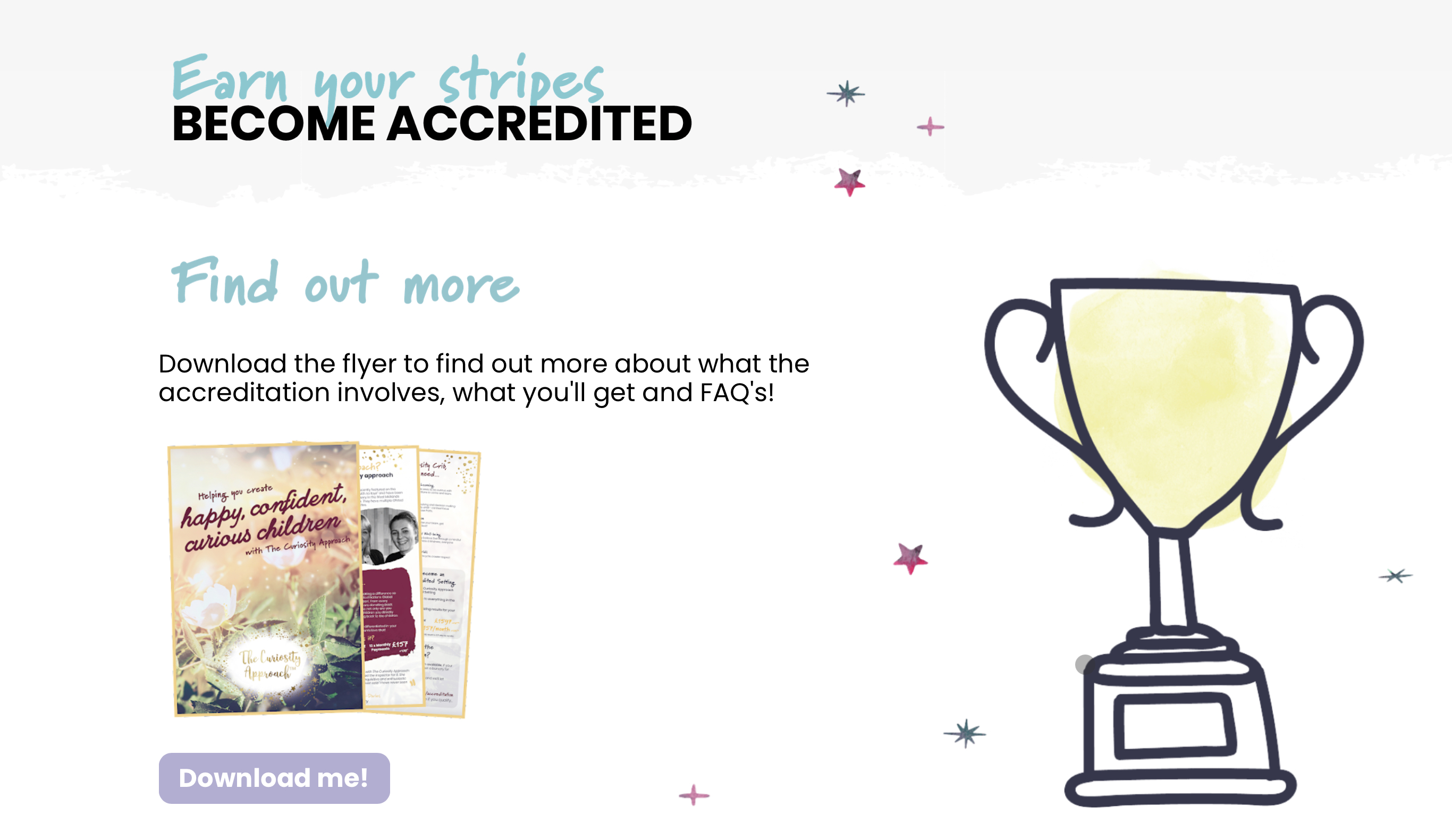Creating a Text rich environment
Release Date: May 31, 2023
Last Updated: October 27, 2023
What does a rich rich environment look like? At The Curiosity Approach® we believe that it isn’t about stapling a label to every piece of furniture or object within our settings. It isn’t about laminated signs and ABC friezes. It’s doesn’t mean we have to blu tac signs up everywhere either ! We also believe that we have to consider WHY are we labelling every shelf and basket? Is it stage appropriate for the children we care for, or are we drip feeding information into the tops of the heads in a hope children will learn to read quicker?
Let’s keep in mind that text and data are throughout our provisions, throughout our homes, streets and communities ! Environmental text is everywhere. We have to keep in mind the evolutionary stages of development the brain development of children and that pre requisites for language and literacy happen when adults provide a language rich environment, sharing conversations, books, songs and stories with children. To have those meaningful conversations and to ensure that the children’s play space meets their individual needs and learning styles. That children fall in love with books and reading, that intrinsic desire to learn more.
Let’s keep in mind that children are naturally curious and will begin to notice text, recognise and learn about letters and numbers when it interests them, when they have a desire to find out more. They’ll ask questions and through conversations and a curious inquisitive mind they’ll learn that text carriers meaning.
Bombarding our settings with labels and signage sadly just becomes visual noise for children, they’ll switch off! Oblivious. It all becomes wallpaper! Why? Because the human brain has a way of filtering out all the stuff that’s irrelevant to us!
Did you know the brain is constantly processing information from the environment. However, it cannot attend to all the information at once.
Instead, the brain filters out information that is deemed irrelevant or unimportant to the task at hand. This filtering process is known as selective attention. When children are bombarded with visual noise, their brain will filter out the information that is not relevant. Several studies have examined the effects of visual noise on cognitive processing. One study found that when participants were presented with a high degree of visual noise, their working memory performance decreased significantly (Kane & Engle, 2002). Another study found that visual noise can impair attentional control and increase distractibility (Lavie, 2005).
At The Curiosity Approach® instead of stapling up signs and labels we offer text in a much more subtle and natural way. We make it relevant and of interest to the children as they play and engage in the daily life of the setting.
Text is mindfully considered and throughout our provision. It’s relevant to the children we serve.
Want to learn more about The Curiosity Approach® pedagogy and how we transform traditional educational practice, traditions in Early Years?
Reflecting on WHY we do what we do and asking ourselves, is it really meeting the needs of children and the way they learn? Or are we stuck doing stuff, because we’ve always done it that way. We are delighted to inform you we have created a ‘TEAM GATHERING’ all about creating a ‘ Text and language rich environment for children’

Click the link to gain access https://the-curiosity-approach...
Did you also know we offer a extensive CPD TRAINING PROGRAMME, Enabling entire teams to work towards becoming a Curiosity Approach® accredited setting. This online virtual toolkit is conducive to any curriculum, any country world wide. It will help educators unlearn and relearn. To have a growth mindset and to adopt a way of working with children that follows their needs interests and learning styles, to create rich powerful play spaces that ignite curious minds. Want to learn more ?

Click the link to find out more https://www.thecuriosityapproa...
This article and images are copyright protected
References from above
Kane, M. J., & Engle, R. W. (2002). The role of prefrontal cortex in working-memory capacity, executive attention, and general fluid intelligence: An individual-differences perspective. Psychonomic Bulletin & Review, 9(4), 637-671.
Take our quiz here https://thecuriosityapproach.s...


